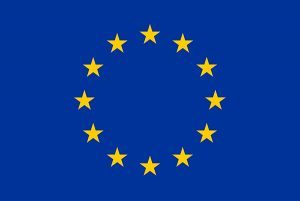openENTRANCE analyses the new challenges of the energy transition and demonstrates the ability of the project to answer a wide range of questions linked to the energy transition by carrying out case study simulations. These case studies cover different key aspects of the energy transition in Europe, based on the targets for the EU Energy Union. For example, the role of different technologies to enhance the flexibility of the energy system, or the energy demand behaviour of communities.
As part of its open nature, openENTRANCE has discussed the relevance of the case studies with stakeholders in workshops. The case studies also serve to test and demonstrate the functioning of the modelling platform and the linkages between models through the analysis of eight case studies.
Read more about the Case Study Development in Report 6.1
Our Case Study definition and requirements are a key part of our projects ambition to build an open, transparent and integrated modelling platform for assessing low-carbon transition pathways for Europe.
1
Exploits recent real-life data on households’ demand-response capabilities from field-tests across the EU to assess accurate response potentials and their impacts on the European power system.
Key aspects covered:
Human behaviour, decentralization, flexibility, real market, functioning, short term and long-term dynamics.
2
Analysis of communities of actors being partly self-supplied. Calculation of, among others, hourly residual electricity purchases needed from the public grid in Austria and in four other reference regions. This enables the calculation of changes in terms of the revenue streams of several parties involved along the supply chain. Quantification of impact on European level.
Key aspects covered:
Demand – impact of communities
3
Comparison of the flexibility of pumped hydro storage with batteries for future high-variability power systems caused by a large share of variable renewables. Analyses for the Iberian Peninsula and the Nordic region. Impacts on pan-European level.
Key aspects covered:
Variability, flexibility, decentralisation
4
Focus on transport sector coupling technologies such as electric vehicles and electric overhead-line trucks. It aims to assess how associated flexibility potentials can be tapped when local information and regional (distribution) network constraints are included in the analysis.
Key aspects covered:
Decentralization, flexibility and sector integration, consumer behaviour
5
Comparison of different levels of European/national coordination aimed at facilitating the integration of local/regional decentralisation.
Key aspects covered:
Decentralisation, variability, flexibility
6
Analysis of the use of innovative technology such as underground rocks for seasonal heat storage.
Key aspects covered:
Flexibility, demand, communities of actors
7
Unlocking flexibility from the heating sector to cope with increasing volatility caused by a high share of intermittent wind power in the system.
Key aspects covered:
Variability, the need for flexibility for real market functioning, demand-behaviour of individuals, sector coupling
8
Research of the role of natural gas storage in current and future energy systems in transition. Renewable gas from power-to-gas conversion of surplus renewable electricity can potentially be stored in natural gas storage, thereby providing medium- to long-term flexibility.
Key aspects covered:
Flexibility, electricity-gas integration
9
Case Study 9 will consider the analysis of the economic impacts of different policies to foster the integration of Renewable Energy Sources, including the role of subsidies and taxes and the investigation of regulatory barriers.
Key aspects covered:
Do you want to learn more?

openENTRANCE
open ENergy TRanstion ANalyses for a low-Carbon Economy

This project has received funding from the European Union’s Horizon 2020 research and innovation programme under grant agreement No. 835896. The sole responsibility for the content of this website lies with the authors. It does not necessarily reflect the opinion of the European Union.
This website is licensed under a Creative Commons License.
Attribution 4.0 International License
For more information about this license and for the full legal text. Please click here.